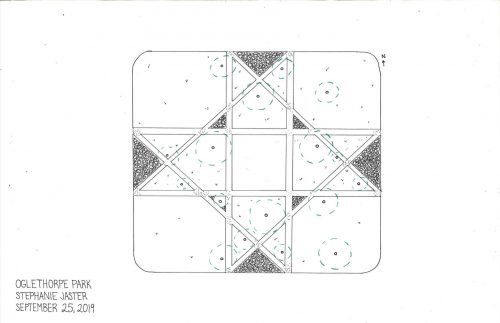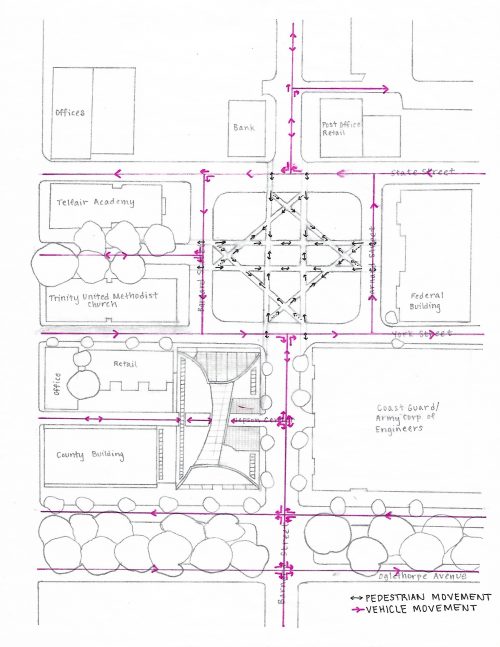ARCH 273: Strategies for Architectural Design
Second-Year Undergraduate Design Workshop
Aneesha Dharwadker & Andrea Melgarejo de Berry, Fall 2019
Savannah, Georgia was incorporated in the early 18th century and is one of the most famous examples of grid-based urban planning. The city is deeply embedded in the history of slavery, colonialism, cotton production, the Civil War, and Reconstruction, as well as cultural and artistic production today. This redesign of Telfair Square, in downtown Savannah, memorializes the city's grid plan with surface manipulation and vegetation design, creating a contemporary urban experience with historic references.
In the 1700s, James Oglethorpe developed the Savannah plan based off of a grid of roads and squares of land that would prevent the uneven distribution of land to the rich. He believed that he could fix a broken English society by negating class divisions through city planning. The Oglethorpe Plan contained a consistent array of squares with several organized roads and defined private and public spaces. The plan efficiently regulated the flow of vehicle and foot traffic while connecting each square to the next in an organized fashion.
The plaza at Telfair Square draws from Oglethorpe’s idea of organizing space through urban planning, and consists of several paths starting and ending at one of the eight entrances. These paths connect to pre-existing crosswalks outside the plaza. Instead of repeating the grid, the paths are reordered to create more efficient movements – each entrance leads directly to a non-adjacent crosswalk. The plaza maintains a square form, referring to the plazas within each square section of the original Oglethorpe Plan.

Paper process model exploring voids and surface manipulation

Site plan

Urban plan with pedestrian and vehicular movement diagrams

Model top view

Model perspective view
